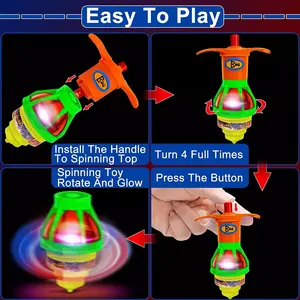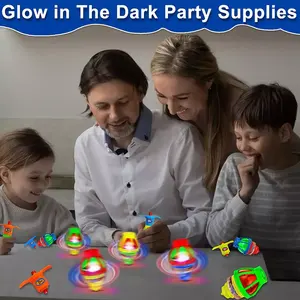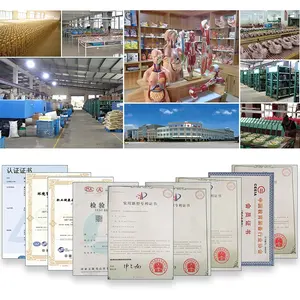
All categories
Featured selections
Trade Assurance
Buyer Central
Help Center
Get the app
Become a supplier

(2810 products available)












































A plastic spinning top toy is a small toy that is usually spun using a finger. Depending on the shape and design of the top, it may spin for some seconds or even minutes. Below are the common types of spinning top toys:
Classic tops
Classic spinning tops are also known as simple tops. They come in different sizes, from very small to medium and large sizes. These tops are made from plastic and have a pointed or tapered bottom part for easy spinning. This classic top is set in motion by flicking the finger. It has a simple design that is easy to use.
Whirligig tops
Whirligig tops are also known as whizzer tops. These tops have a small plastic pull string attached to them. The pull string is wrapped around the top's body. When the string is pulled, it releases the wrap and sets the top into a spinning motion. Whirligig tops produce a whistling sound when spun at high speed. They come in various colors and sizes.
Gyro tops
Gyro tops, also known as gyroscope tops, have a unique design and complex spinning mechanism. These tops contain a small internal spinning mechanism that is activated when the top is pulled. The internal spinning mechanism helps keep the top balanced and increases its spinning time. Gyro tops can spin for minutes without wobbling or falling.
Beyblade tops
Beyblade tops are battle tops inspired by the popular anime series Beyblade. These tops come with an internal spinning mechanism that is activated by pressing a button. They have a sturdy design and can be used for battles with other spinning tops. Beyblade tops can perform different spinning tricks, such as quick changes in speed, sudden stops, and sharp turns.
Fidget tops
Fidget tops are a combination of a spinning top and fidget spinner. These tops have a small plastic fidgeter attached to their body. The fidgeters can be pressed, clicked, or rotated while spinning the top. Fidget tops have many designs, such as a fidget top with a mini Rubik's cube and a fidget top with a fidget wheel.
When choosing spinning top toys for resale, buyers should consider the material. Ideally, spinning tops are made from metal, wood, or plastic. Each material has its pros and cons. For instance, metallic spinning tops are known for their longevity and stability. However, they may be heavy for children. Wooden spinning tops also last long, but they can be more costly because of the craftsmanship involved. The good news is that plastic spinning tops are cheaper and usually more colorful. They are also much lighter, making them ideal for children. The spinning top may break after some time, but the impact on the child's hand is minimal. That said, buyers should check the quality of the plastic used before placing an order. Some manufacturers use low-quality plastic that can harm children. Such spinning tops should be avoided at all costs.
Buyers should also consider the age of the intended user when choosing spinning tops. Some spinning tops are designed for children, while others are for adults. Tops designed for children are usually simple and colorful. They may even come with extra features like sound and light to enhance play. Such tops are also lightweight and easy to spin. On the other hand, spinning tops for adults are more complex. They require a certain level of skill to spin. Such tops also have longer spin times. They include tops like beyblade and fidget tops.
Some spinning tops can easily get lost, especially if the child is using them outside. That is why buyers should get spinning tops with a carrying case. The carrying case will not only help transport the tops but also store them. It ensures the spinning tops are kept in good condition until they are needed. Additionally, buyers should get spinning top toys in different sizes. Some children prefer playing with bigger spinning tops, while others like smaller ones.
Finally, buyers should choose spinning tops that are easy to maintain. Such tops can be cleaned and stored ready for the next play. Also, spinning tops that come with extra parts are a great choice. In most cases, the extra parts are useful when the main parts get damaged. It reduces the need to buy a completely new spinning top. More importantly, buyers should choose spinning tops suitable for their target market. For instance, spinning tops purchased for educational purposes will be useful for teaching physics. Such spinning tops have elements that require balancing and stability.
Entertainment
Plastic spinning top toys are used for entertainment. Children play with them and have fun watching them spin for long.
Engagement
The spinning tops keep children engaged for hours. Children engage in different spinning top activities. They can race them, battle or try to spin them longer.
Interaction
Spinning top toys encourage interaction among children. Kids join and play together, creating bonds and friendships.
Durability
Plastic spinning tops are durable. They can withstand rough play without breaking. This makes them ideal for active children.
Portability
Plastic spinning tops are small and lightweight. Children can carry them anywhere they go.
Variety
Plastic spinning top toys come in different varieties. They include beyblade tops, fidget tops, and gyroscope tops, among others.
Ease of Use
Many spinning top toys are easy to use. Even younger children can learn how to spin them with no help.
Material
Plastic spinning tops are made from plastic, metal, or a combination of both. The plastics are non-toxic and child-friendly. Some metals, like aluminum, are also safe for children. Other metals, like chrome, are not.
Shape and Size
Plastic spinning tops come in a wide range of shapes and sizes. They can be small, big, round, or even in the shape of a cartoon character.
Colors and Designs
The tops come in many beautiful colors, making them attractive to children. Some tops have special designs like stripes, stars, or even pictures.
Customization
Some spinning tops can be customized. Children can add their names, choose colors, or even get special designs.
Safety and quality are the two most important things to consider when choosing a plastic spinning top toy. The material used in making the toy is of utmost importance. It must be strong enough to withstand repeated spinning and child handling. Ideally, the material should be non-toxic and BPA-free plastic. That way, parents or guardians do not have to worry when their kids use the spinning top.
The quality of a plastic spinning top also depends on how well it was manufactured. For instance, the toy should have smooth edges so that it does not cut or scratch a child. Also, it should be well-assembled with all parts firmly attached. Loose or detached parts can cause choking hazards. Any spinning top that meets these safety requirements is safe for kids to use. Parents should always check safety certifications before buying from a new manufacturer or supplier.
Safety is not just about making sure a plastic spinning top is safe for kids but also for the environment. Some manufacturers offer spinning tops made from recycled plastic. This shows they care about making toys and keeping the environment clean. Buying such toys will not just make kids happy but also help reduce plastic waste.
Q1: Are plastic spinning top toys safe for children?
A1: In most cases, spinning tops are safe for children; however, it depends on the material and construction. Usually, spinning tops made of non-toxic plastic with smooth edges are safe for children. To ensure the safety of the children, parents must check the top toy and supervise its use.
Q2: How long do plastic spinning tops last?
A2: The duration of plastic spinning tops depend on various factors such as material quality, construction, and how well the top is handled. Generally, spinning tops made from high-quality plastic can last for years, even with regular use.
Q3: Can spinning tops be used for educational purposes?
A3: Yes, spinning tops can be used for educational purposes. Teachers and parents can use them to teach concepts in physics, such as spin, balance, and symmetry. Moreover, spinning tops can assist in enhancing fine motor skills and hand-eye coordination in children.